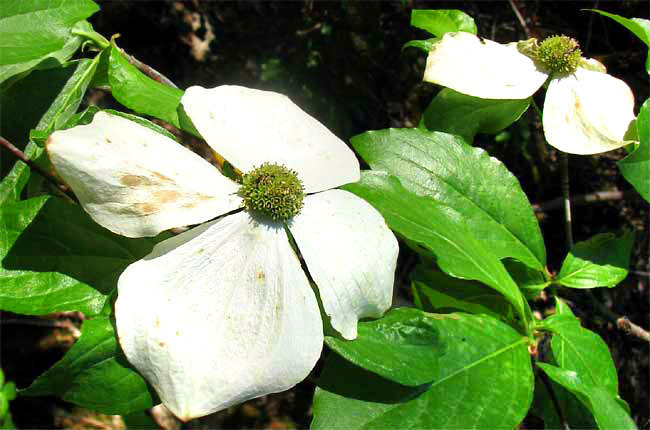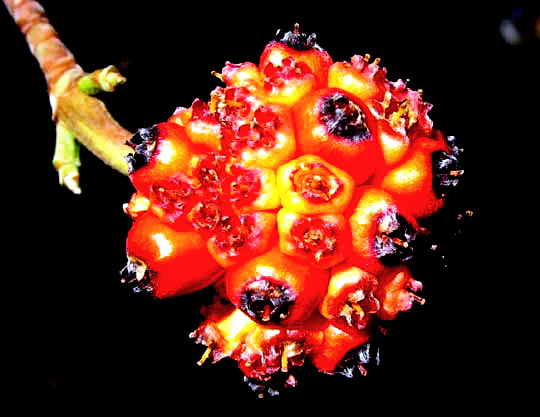Excerpts from Jim Conrad's
Naturalist Newsletter

from the the May 31, 2009 Newsletter, issued from the Siskiyou Mountains west of Grants Pass, Oregon:
PACIFIC DOGWOODS FLOWERING
Pacific Dogwoods, CORNUS NUTTALLII, also are flowering now. They're similar to the East's Flowering Dogwoods but, as with the azalea situation, the Pacific species is larger and projects a more robust image. The East's Flowering Dogwoods grow to about 40 feet tall while Pacifics reach 60, and leaves and flower-heads are correspondingly larger in the Pacific species as well. The Flowering Dogwood's flower heads bear four petal-like, white bracts while the Pacific produces up to six. A Pacific Dogwood's flower head is shown above.
That flower head's white bracts are a little splotched because the trees have been blooming here for nearly a month. Thus the Pacific's flowering period is much longer than the East's as well.
from the October 4, 2009 Newsletter, issued from the Siskiyou Mountains west of Grants Pass, Oregon:
PACIFIC DOGWOODS FRUITING
Our Pacific Dogwoods are fruiting now, and the fruits are a good bit different from the East's, as you can see below:

The Pacific species produces many more fruits per cluster than the Eastern, and the fruits are much more closely packed. They're not quite as shiny and red, either.
Dogwood fruits usually are regarded as drupes, a drupe being a fleshy fruit with one hard-shelled seed, with the fruit not splitting open when mature. Sometimes a fruit turns up holding two seeds, however, making the fruit a berry.